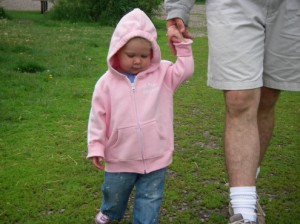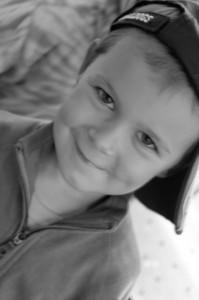We are concluding this series with two more of the most common challenges of transitioning from infancy to toddlerhood as your baby grows. Here is what parents had to say…
 What do you find most challenging about transitioning from using AP in infancy to using AP in toddlerhood?
What do you find most challenging about transitioning from using AP in infancy to using AP in toddlerhood?
Challenge: Understanding Needs vs. Wants
- Figuring out the difference between wants and needs. Babies are so easy as they are one in the same. Toddlers … not so much.
- The shift from solely addressing needs to creating a strong foundation for addressing desires and emotional responses
- Distinguishing needs from wants
Tip: Be confident.
You know your child better than anyone. You have been caring for her since before she was born, responding to her cues, learning her behaviors and understanding what she needs and when. Have confidence in being able to distinguish the difference between needs and wants for your child. As an attuned parent, you know best what your toddler needs (vs. what is merely a “want”) and can respond appropriately. Things like …
- nutrition
- connection
- autonomy
- safety
- empathy
- adequate sleep
- belonging
- respect
- healthy limits
- security
- understanding
- acceptance
… are the things your toddler truly needs, and there is a wide range of what is appropriate among children. Needs and wants are definitely not the same for every child. You are the expert on your child—so trust yourself in the limits you set for him. Though your toddler may act like he needs a toy or a sweet treat or just one more bedtime story, trust your inner assurance that you are meeting his most essential needs—the ones necessary for optimal growth and maturation.
Click here to download a teleseminar with Dr. William Sears on API Live! about “Needs vs. Wants: How to Fulfill a Child’s Needs Yet Discern His Wants in a Way That Preserves Healthy Attachment.”
Challenge: Learning New Parenting Tools
- I feel like I’ve lost my toolkit for how we have handled difficult times (frustration, exhaustion, fear).
- “The breast” is no longer THE solution.
- Finding solutions to new behavior
Tip: Stay connected.
Whether it’s online or in person, there are a variety of ways to add to your parenting toolbox. Online communities offer a chance to ask questions and get ideas and resources in return, while local communities are great for connecting to AP moms and dads in person. Both give parents a different kind of support, and both are helpful for gaining new perspectives on handling challenging toddler behavior. In addition to connecting with AP parents who have “been there, done that,” staying connected to the latest news and updates in parenting is a must. There are so many blogs and online resources that are dedicated to sharing articles, posts and links on AP tips, tools and the latest research in parent education. Find some favorites to add to your newsfeed and RSS reader. To start, you can add these great API resources:
- The Attached Family, API’s online magazine
- Attachment Parenting International homepage
- API’s Facebook page
Whether it’s online (communities, blogs, Facebook pages, webinars, teleseminars) or in-person (communities, classes, support groups or local AP friends with older children), you can’t beat parents helping parents to expand your toolbox! Keep talking, keep reading, keep learning more about your child’s development.
Don’t miss Part 1, Part 2, Part 3, and Part 4 of this series on transitions into toddlerhood!



